JP Morgan Chase 2010 Annual Report Download - page 12
Download and view the complete annual report
Please find page 12 of the 2010 JP Morgan Chase annual report below. You can navigate through the pages in the report by either clicking on the pages listed below, or by using the keyword search tool below to find specific information within the annual report.-
 1
1 -
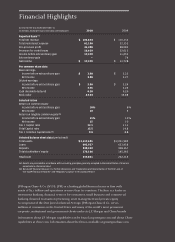 2
2 -
 3
3 -
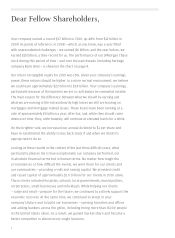 4
4 -
 5
5 -
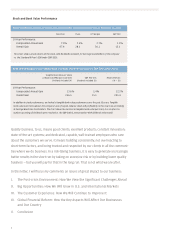 6
6 -
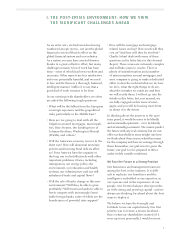 7
7 -
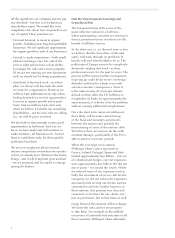 8
8 -
 9
9 -
 10
10 -
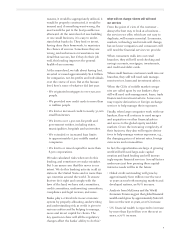 11
11 -
 12
12 -
 13
13 -
 14
14 -
 15
15 -
 16
16 -
 17
17 -
 18
18 -
 19
19 -
 20
20 -
 21
21 -
 22
22 -
 23
23 -
 24
24 -
 25
25 -
 26
26 -
 27
27 -
 28
28 -
 29
29 -
 30
30 -
 31
31 -
 32
32 -
 33
33 -
 34
34 -
 35
35 -
 36
36 -
 37
37 -
 38
38 -
 39
39 -
 40
40 -
 41
41 -
 42
42 -
 43
43 -
 44
44 -
 45
45 -
 46
46 -
 47
47 -
 48
48 -
 49
49 -
 50
50 -
 51
51 -
 52
52 -
 53
53 -
 54
54 -
 55
55 -
 56
56 -
 57
57 -
 58
58 -
 59
59 -
 60
60 -
 61
61 -
 62
62 -
 63
63 -
 64
64 -
 65
65 -
 66
66 -
 67
67 -
 68
68 -
 69
69 -
 70
70 -
 71
71 -
 72
72 -
 73
73 -
 74
74 -
 75
75 -
 76
76 -
 77
77 -
 78
78 -
 79
79 -
 80
80 -
 81
81 -
 82
82 -
 83
83 -
 84
84 -
 85
85 -
 86
86 -
 87
87 -
 88
88 -
 89
89 -
 90
90 -
 91
91 -
 92
92 -
 93
93 -
 94
94 -
 95
95 -
 96
96 -
 97
97 -
 98
98 -
 99
99 -
 100
100 -
 101
101 -
 102
102 -
 103
103 -
 104
104 -
 105
105 -
 106
106 -
 107
107 -
 108
108 -
 109
109 -
 110
110 -
 111
111 -
 112
112 -
 113
113 -
 114
114 -
 115
115 -
 116
116 -
 117
117 -
 118
118 -
 119
119 -
 120
120 -
 121
121 -
 122
122 -
 123
123 -
 124
124 -
 125
125 -
 126
126 -
 127
127 -
 128
128 -
 129
129 -
 130
130 -
 131
131 -
 132
132 -
 133
133 -
 134
134 -
 135
135 -
 136
136 -
 137
137 -
 138
138 -
 139
139 -
 140
140 -
 141
141 -
 142
142 -
 143
143 -
 144
144 -
 145
145 -
 146
146 -
 147
147 -
 148
148 -
 149
149 -
 150
150 -
 151
151 -
 152
152 -
 153
153 -
 154
154 -
 155
155 -
 156
156 -
 157
157 -
 158
158 -
 159
159 -
 160
160 -
 161
161 -
 162
162 -
 163
163 -
 164
164 -
 165
165 -
 166
166 -
 167
167 -
 168
168 -
 169
169 -
 170
170 -
 171
171 -
 172
172 -
 173
173 -
 174
174 -
 175
175 -
 176
176 -
 177
177 -
 178
178 -
 179
179 -
 180
180 -
 181
181 -
 182
182 -
 183
183 -
 184
184 -
 185
185 -
 186
186 -
 187
187 -
 188
188 -
 189
189 -
 190
190 -
 191
191 -
 192
192 -
 193
193 -
 194
194 -
 195
195 -
 196
196 -
 197
197 -
 198
198 -
 199
199 -
 200
200 -
 201
201 -
 202
202 -
 203
203 -
 204
204 -
 205
205 -
 206
206 -
 207
207 -
 208
208 -
 209
209 -
 210
210 -
 211
211 -
 212
212 -
 213
213 -
 214
214 -
 215
215 -
 216
216 -
 217
217 -
 218
218 -
 219
219 -
 220
220 -
 221
221 -
 222
222 -
 223
223 -
 224
224 -
 225
225 -
 226
226 -
 227
227 -
 228
228 -
 229
229 -
 230
230 -
 231
231 -
 232
232 -
 233
233 -
 234
234 -
 235
235 -
 236
236 -
 237
237 -
 238
238 -
 239
239 -
 240
240 -
 241
241 -
 242
242 -
 243
243 -
 244
244 -
 245
245 -
 246
246 -
 247
247 -
 248
248 -
 249
249 -
 250
250 -
 251
251 -
 252
252 -
 253
253 -
 254
254 -
 255
255 -
 256
256 -
 257
257 -
 258
258 -
 259
259 -
 260
260 -
 261
261 -
 262
262 -
 263
263 -
 264
264 -
 265
265 -
 266
266 -
 267
267 -
 268
268 -
 269
269 -
 270
270 -
 271
271 -
 272
272 -
 273
273 -
 274
274 -
 275
275 -
 276
276 -
 277
277 -
 278
278 -
 279
279 -
 280
280 -
 281
281 -
 282
282 -
 283
283 -
 284
284 -
 285
285 -
 286
286 -
 287
287 -
 288
288 -
 289
289 -
 290
290 -
 291
291 -
 292
292 -
 293
293 -
 294
294 -
 295
295 -
 296
296 -
 297
297 -
 298
298 -
 299
299 -
 300
300 -
 301
301 -
 302
302 -
 303
303 -
 304
304 -
 305
305 -
 306
306 -
 307
307 -
 308
308
 |
 |

10
• Globalgrossdomesticproductisexpected
to grow by approximately $50 trillion in
nominal terms ($25 trillion in real 2010
dollar-valueterms)overthenext10years,
an approximately 80% increase.
• Annualcorporateinvestmentsinplantand
equipment (globally running at approxi-
mately$8trillionayear)shouldatleast
double over the next 10 years – our multi-
national clients account for approximately
50% of this.
Eectivelydeliveringonthisgrowing
demand requires strong, healthy financial
institutions. This bodes well for JPMorgan
Chase – we are in exactly the right place.
What will not change: Banks will continue to need
to earn adequate market-demanded returns on
capital
Like all businesses, banks must continue
to earn adequate returns on capital – inves-
tors demand it. Some argue, however, that if
regulation results in better capitalized banks
and a more stable financial system, returns
demanded on capital would be lower to reflect
the lower risk involved. This probably is true
but not likely to be materially significant.
What will change: New regulation will aect prod-
ucts and their pricing
A likely outcome of the new regulations is
that products and their pricing will change.
Some products will go away, some will be
redesigned and some will be repriced.
Last year, we spoke about how we would
adjust our products and services for the new
credit card pricing rules and new overdraft
rules. So I will not repeat them here. In a
later section, I will talk about how we will
adjust to the new restrictions on the pricing
of debit cards.
Highercapitalandliquiditystandardsthat
are required under Basel III likely will aect
the pricing of many products and services.
Two examples come to mind:
Current Basel III rules require banks to hold
more capital and maintain more liquidity to
support the revolving credit they provide to
both middle market and large institutions. In
some cases, the liquidity rules alone require
us to hold 100% of highly liquid assets to
support a revolver. For example, to support a
$100 million revolver, we would be required
to own $100 million of highly liquid securi-
tieswithveryshortmaturities.Weestimate
this would increase our incremental cost on
a three-year revolver by approximately 60
basis points a year. That leaves us with three
options:1)passthecostontothecustomer,
2)losemoneyonthatrevolver,or3)not
make the loan. In the real world, the likely
outcome is that some borrowers will have
less or no access to credit, some borrowers
will pay a lot more for credit, some would
pay only a little bit more and some highly
rated companies might find it cheaper to
provide liquidity on their own, i.e., hold
more excess cash on their balance sheet
as opposed to relying on banks for credit
liquidity backup.
Certain products may disappear completely
because they simply are too expensive to
provide.(Some,likethe“CDO-squares”will
notbemissed.)Forexample,capitalcharges
on certain securitizations will be so high
for banks that either these transactions no
longer will be done or they will migrate to
other credit intermediaries (think hedge
funds)thatcanmorecheaplyinvestinthem.
I will have more to say on regulation in the
fourth section of this letter.
What we don’t know (and we have a healthy fear
of unintended consequences)
Around the world and all at once, policy-
makers and regulators are making countless
changes, from guidelines around market-
making, derivatives rules, capital and liquidity
standards, and more. Many of the rules have
yet to be defined in detail, and it is likely
that they will not be applied evenly around
the world. The combined impact of so much
change – so much unknown about the inter-
play among all these factors and an uneven
